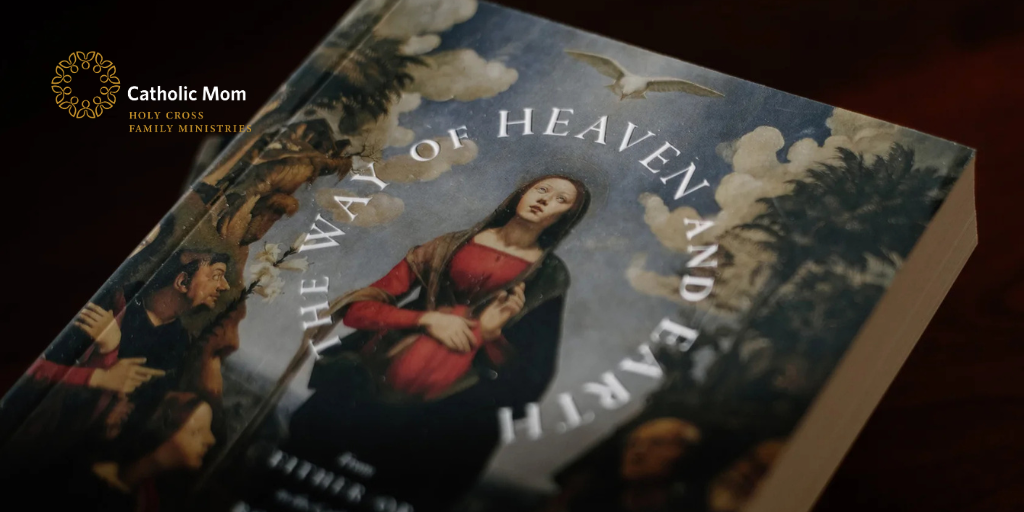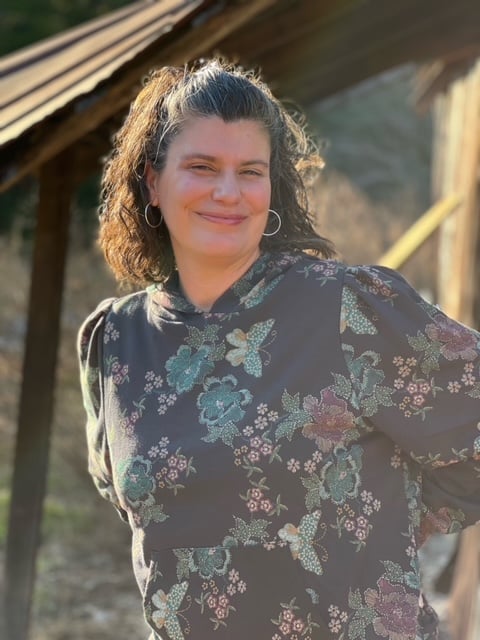
Natalie Hanemann reviews The Way of Heaven and Earth: From Either/Or to the Catholic Both/And by Matthew Becklo, published by Word On Fire.
The Way of Heaven and Earth: From Either/Or to the Catholic Both/And
By Matthew Becklo
Published by Word On Fire
The world is growing more polarized. We split and split again over religion, politics, culture, and art, and what results are divided countries, states, families, and even our own hearts and minds. Republican or Democrat. Traditional or progressive. Theist or atheist. Spirit or flesh. Faith or works. The number of topics to disagree on seems to have no end. But why can’t both be true? Can intelligent people from both sides disagree on an issue without being wrong? In his book The Way of Heaven and Earth, Matthew Becklo believes that while this division has reached crisis levels and threatens the future of civilization, there is another way (The Way) that would bring unity.

Rooted in the concept of “heaven and earth” — what is above and what is below, what is of God and what of man, what is spiritual and what physical — the author describes a paradox between two opposing forces waiting to be embraced. One we see practiced by Christ Himself in the Scriptures and in the Catholic Church; a way that is both/and. The both/and model isn’t saying both/and to good and evil or truth and falsehood, but instead, only to what is good, true, and beautiful. Two ideas can be true (or beautiful, or good) and not contradict.
Drawing from Scripture, the early Church Fathers, and literature, Matthew Becklo makes three assertions:
- Our greatest dilemmas are heaven-earth dilemmas.
- Our heaven-earth dilemmas are only resolved in Christ, the Way of heaven and earth.
- The fullness of the Way is in the Catholic Church, which is defined by the principle of both/and.
Layers of Meaning
The meaning of “heaven and earth” comes in layers. The surface layer is the “things” of heaven and earth, that is the sky above or the ground below. Then four deeper meanings that look at the people of heaven and earth (God and man); the places of heaven and earth (God’s place and man’s place); then specifically on the earth side, man’s place (spiritual and physical) and man himself (spirit and flesh). In an either/or mindset, the heavenly way comes at the expense of the earthly or the earthward way at the expense of the heavenly. But we can have both vertical and horizontal elements without contradiction. Matthew suggests that “heaven and earth crack the code of our deepest divisions” (3).
Drawing from heresies in the early Church, Part 1 looks at the danger in either/or thinking, which sees one side at the expense of the other. For example, Gnosticism sees the earth as darkness and death and heaven and spiritual things the highest heights and where all our focus should rest. The Catholic both/and is a way to look at heaven and earth as separate but also as a unity that connects.
Despite the clear contrast, [earth and sky] can’t be neatly divided, each in its own separate, self-contained space. The sky and the ground are ordered to each other, reach out for each other, participate in each other. This connection is established by a top-down movement, with heaven first lowering itself: the ‘lights in the dome of the sky’ shine down as ‘signs’ and give light to the earth, (Gen 1:14-15) and the land is ‘watered by rain from the sky’ (Deut 11:11). But the earth doesn’t just passively receive this shower of light and water; it responds by growing upward and outward. (13)
The author’s numerous biblical examples of finding unity in difference is convincing.
After unpeeling the heaven and earth layers, Becklo spends the second part of the book exploring how philosophy experiences the same great dilemmas of heaven and earth. He outlines the argument between Essence or Existence, Providence or Free Will, and Discipline or passion, among others. These theological pursuits are clearly explained and helpful for readers who may not have previously drilled down into the philosophy of theology in their studies.
By examining each of these dualities, the reader is showed the benefit of the middle space between the polar ends. Must we give up passion to remain disciplined? Is there a way to harness both forces in life without abandoning one? Do we have the denigrate emotions to support stoicism? This extreme polarization is at the heart of what the author wants us to see. Fortunately, we’ve had a model for both/and in the Catholic Church, in the Scriptures, and in Jesus, from the beginning.
In part 3, the author presents the Catholic both/and model as principles but without a script (7). It promotes conversations that force us out of oversimplifying ideas and situations and instead asks for a conversation that may include tension and drama, but that involve self-correction and fine-tuning. In an age where we want to reduce an issue to one statement, Becklo is promoting a longer, more interesting conversation to be had.
Each week Catholics gather at Mass where “the once-and-for-all sacrifice of the Son is re-presented vertically to the Father, and the community is gathered horizontally for a sacred memorial meal” (290). Becklo persuasively asserts that the Catholic Church, while full of paradoxes, presents an ultimate paradox, one that demands a choice: the Way of heaven and earth or the endless division of Satan.
Practical Application of the Book’s Message
The author’s concise writing style helps simplify some of the scholarly concepts and makes deep philosophical and theological concepts understandable for the reader. While this book may not be for the Catholic reader looking for a simplified presentation of the faith, it is well worth investing the time to understand, even peripherally, these concepts because the overall message is a practical one we can begin to apply right away in our daily lives.
This book equips readers with substantial examples and plenty of Church history that show the benefit of the both/and perspective when faced with a polarizing decision between two oversimplified extremes. There is a way to approach a dilemma — whether it’s the latest news story, scandal, or disagreement with a member of another faith community — that doesn’t vilify or alienate someone with a differing view than our own.
The ideal set of readers for this book would be undergrad and graduate students studying theology, readers interested in understanding the intellectual side of social behavior, and those who strive for a role model of how Jesus may approach modern cultural issues. As Peter Kreeft, author and philosophy professor at Boston College, wrote in his review of this book, “It shows how Christ is a matchmaker who marries (not compromises) all the spiritual couples that the world divorces.”
This book is a map leading us toward greater unity.

Ask for The Way of Heaven and Earth: From Either/Or to the Catholic Both/And at your local Catholic bookseller, or order online from Amazon.com or the publisher, Word On Fire.
Is this a book you'd like to read? Share your thoughts with the Catholic Mom community! You'll find the comment box below the author's bio and list of recommended articles.
Copyright 2025 Natalie Hanemann
Images: (top) courtesy of WordOnFire.org
About the Author

Natalie Hanemann
Natalie Hanemann earned an M.A. in Theology from Franciscan University. As a wife and mom of four, she is obsessed with reading, hiking, and talking about God. She has worked as a book editor for 25 years and also ghostwrites. Her first book, on spiritual intimacy, is slated to come out some time before Jesus returns, God willing. Subscribe to her blog by visiting NatalieHanemann.com.


.png?width=1806&height=731&name=CatholicMom_hcfm_logo1_pos_871c_2728c%20(002).png)
Comments